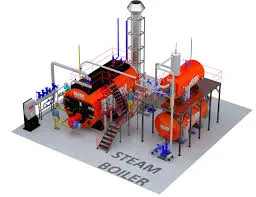
Aug . 13, 2024 14:26 Back to list
Steps for Effectively Draining and Maintaining Your Steam Boiler for Optimal Performance and Longevity
How to Drain a Steam Boiler A Step-by-Step Guide
Draining a steam boiler is a vital maintenance procedure that ensures the safe and efficient operation of the boiler system. Over time, sediment and impurities can accumulate in the boiler, leading to decreased efficiency and potential damage. Regular draining helps in preventing these issues and prolonging the life of the equipment. Here’s a comprehensive guide on how to properly drain a steam boiler.
Safety First
Before beginning the draining process, it’s essential to prioritize safety. Make sure to follow all manufacturer guidelines and local regulations. Prepare the necessary safety gear, including gloves, goggles, and protective clothing. Ensure the boiler is not under pressure and has cooled down sufficiently to avoid burns or injuries. Shut off the boiler and, if applicable, the fuel supply.
Tools and Materials Needed
You will need a few tools and materials to facilitate the draining process - A hose long enough to reach a suitable drainage point - A bucket or container to collect water - A wrench for loosening fittings (if necessary) - A flashlight for better visibility - A pressure gauge (optional) for monitoring pressure
Step-by-Step Process
1. Turn Off the Boiler Begin by switching off the steam boiler and allowing it to cool completely. This will reduce the risk of burns and other injuries.
2. Close the Feedwater Valve Locate the feedwater valve and close it to prevent any new water from entering the boiler during the draining process.
3. Connect the Drainage Hose Attach a hose to the boiler's drain valve. Ensure that the hose is securely fitted to prevent any leaks. The other end of the hose should lead to a designated drainage area, such as a floor drain or outside.
how to drain a steam boiler

4. Open the Blowdown Valve Open the blowdown valve slowly. This valve is designed for removing sediment and sludge from the bottom of the boiler. It’s a good practice to start with a small opening to let the water flow out gradually while monitoring pressure levels.
5. Monitor the Drainage Process As the water drains, watch for signs of sediment or residue. If you notice any buildup, consider performing a more thorough blowdown by fully opening the valve for a brief period.
6. Flush the Boiler Once the majority of the water has drained, you may flush the boiler with clean water. To do this, close the blowdown valve and partially open the feedwater valve to allow fresh water to enter the boiler. This process helps to wash out remaining sediments.
7. Close All Valves After flushing, close the blowdown valve and any other valves that were opened during the process. Ensure that all connections are secure.
8. Reopen the Feedwater Valve Once the boiler is clean and all valves are closed, you can reopen the feedwater valve to restore water to the boiler.
9. Check for Leaks Inspect all connections for leaks or drips after the draining and refilling process. Make any necessary repairs before proceeding to start the boiler.
10. Restart the Boiler Finally, you can restart the boiler following normal operating procedures. Monitor the system for a few cycles to ensure everything operates smoothly.
Conclusion
Regularly draining your steam boiler is essential for maintaining its efficiency and longevity. By following these steps, you can help prevent common issues such as buildup and overheating, ensuring a safe and effective boiler operation. Always remember that if you are uncertain or uncomfortable performing maintenance tasks, it is best to consult a professional technician. A well-maintained steam boiler not only enhances performance but also contributes to overall safety in your facility.
-
Best Steam Boiler Design PDF Free Design Calculation & Diagram Downloads
NewsJun.10,2025
-
Hot Boiler Water Heater Efficient Heating Solutions for Home & Commercial Use
NewsJun.10,2025
-
Steam Boiler Safety Devices High-Quality Protection Valves
NewsJun.10,2025
-
Ultimate Steam Boiler Checklist for Safety & Efficiency
NewsJun.10,2025
-
Optimal Hot Water Boiler Temperature Setting Guide
NewsJun.10,2025
-
Effective Hot Water Boiler Chemical Treatment Protect & Maintain
NewsJun.09,2025
Related PRODUCTS






















